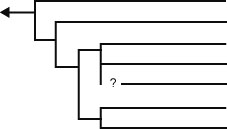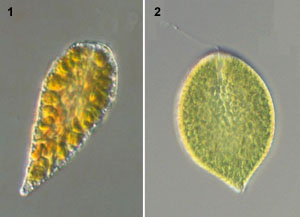| NIES-MCC | KU-MACC | Tree to Strain | Japanese | English |
| Life / Eukarya / Stramenopila / Heterokontophyta / Raphidophyceae / Raphidomonadales / Raphidomonadaceae | |

|
Fibrocapsa |
| References |
|
|
THe raphidophyceaean algae are unicellular flagellate inhabiting widely in freshwater and marine. They sometimes form blooms and some species (especially Chattonella) damage fish farming. The cell possesses two heterodynamic flagella inserted apical depression. The cytoplasm is roughly divided into exoplasm containing many chloroplasts and vacuoles, and endoplasm containing nucleus, Golgi bodies and mitochondria. Because major carotenoid is fucoxanthin in marine species and diadinoxanthin in freshwaterspecies, they are yellowish (Fig. 1) and greenish (Fig. 2) respectively. The raphydophycean algae usually possess ejectile organelles (e.g. mucocysts, "trichocysts"). Vegetative cells are diploid and haploid cells via mitosis fuse to form cyst. Most species are planktonic, but Haramonas produces motile and benthic non-motile stages. |
 1: Chattonella (NIES-85). 2: Gonyostomum (NIES-1380). |